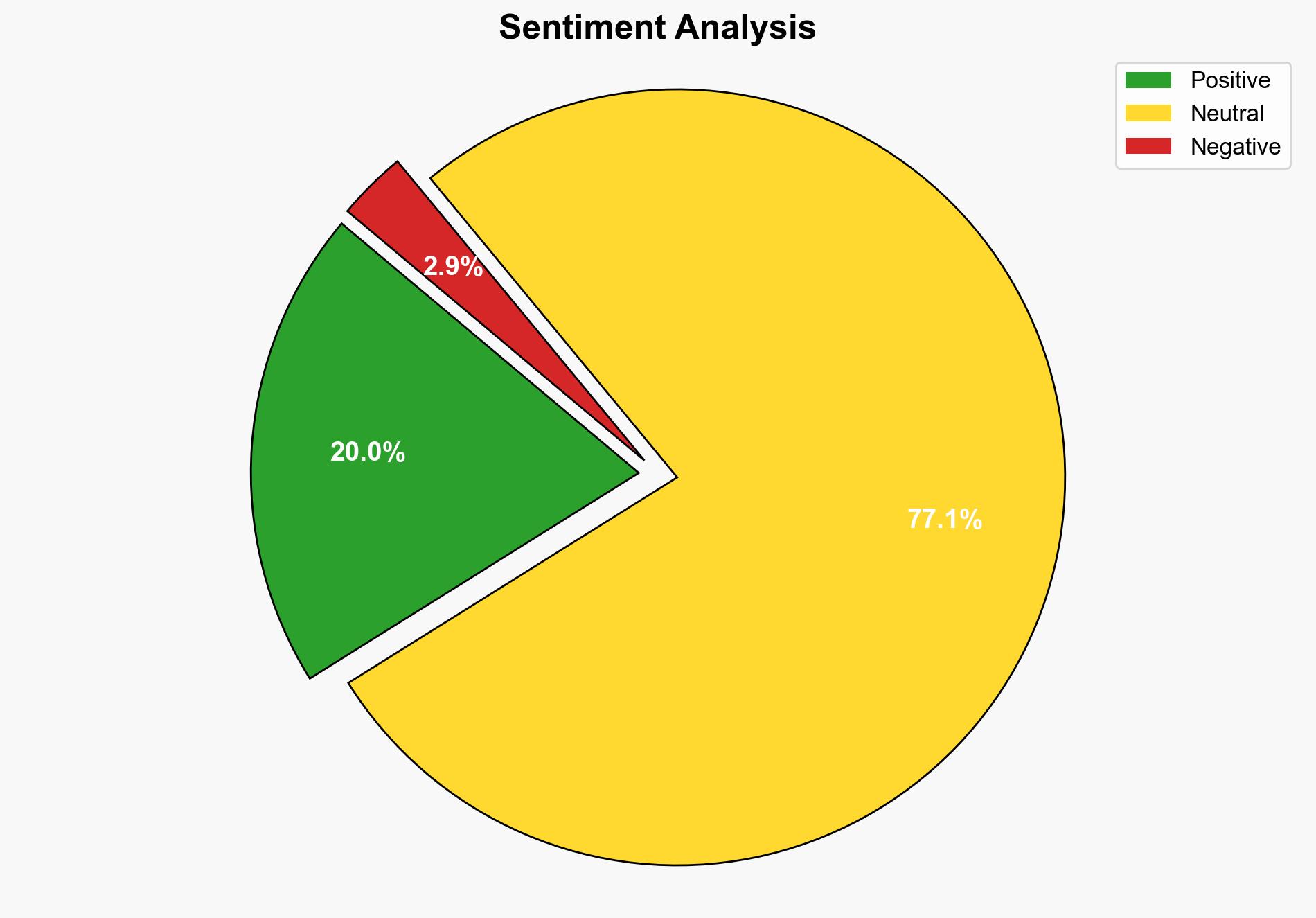Everyone thinks AI will transform their business – but only 13 are making it happen – ZDNet
Published on: 2025-10-21
Intelligence Report: Everyone thinks AI will transform their business – but only 13 are making it happen – ZDNet
1. BLUF (Bottom Line Up Front)
The strategic judgment is that while AI is perceived as a transformative force, only a small subset of businesses are effectively integrating it into their operations. The most supported hypothesis is that organizational readiness and strategic vision are critical determinants of successful AI implementation. Confidence level: Moderate. Recommended action: Focus on enhancing organizational readiness and strategic alignment to leverage AI effectively.
2. Competing Hypotheses
Hypothesis 1: The primary barrier to AI transformation in businesses is a lack of organizational readiness and strategic alignment, rather than technological limitations.
Hypothesis 2: The slow adoption of AI is primarily due to technological and infrastructural limitations, with organizational factors playing a secondary role.
Using ACH 2.0, Hypothesis 1 is better supported by the evidence, which highlights a disconnect between organizational confidence and actual ROI from AI initiatives. The mention of “readiness gap” and “disconnect” suggests that internal strategic and readiness issues are more significant barriers than technology alone.
3. Key Assumptions and Red Flags
Assumptions:
– Businesses have access to necessary AI technologies.
– Organizational readiness can be accurately assessed and improved.
Red Flags:
– Potential over-reliance on survey data, which may not capture the full complexity of AI integration challenges.
– Possible bias in self-reported confidence levels by executives.
4. Implications and Strategic Risks
The readiness gap poses a risk of widening competitive disparities between AI “pacesetters” and laggards. This could lead to economic imbalances and increased pressure on lagging businesses to adopt AI hastily, potentially leading to suboptimal implementations. Cybersecurity risks may also escalate as businesses rush to integrate AI without adequate preparation.
5. Recommendations and Outlook
- Conduct comprehensive readiness assessments to identify and address organizational gaps.
- Invest in training programs to equip the workforce with necessary AI skills.
- Scenario Projections:
- Best: Businesses achieve seamless AI integration, enhancing efficiency and competitiveness.
- Worst: AI initiatives fail due to inadequate preparation, leading to financial losses and reputational damage.
- Most Likely: Gradual improvement in AI adoption as businesses address readiness issues.
6. Key Individuals and Entities
Martin Schroeter, Kyndryl
7. Thematic Tags
business transformation, AI integration, organizational readiness, technology adoption





